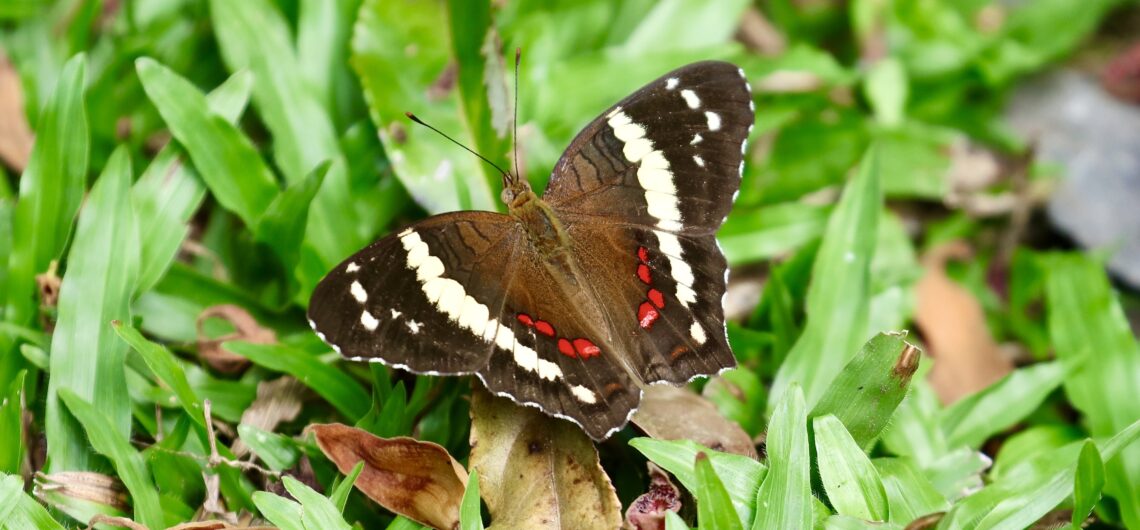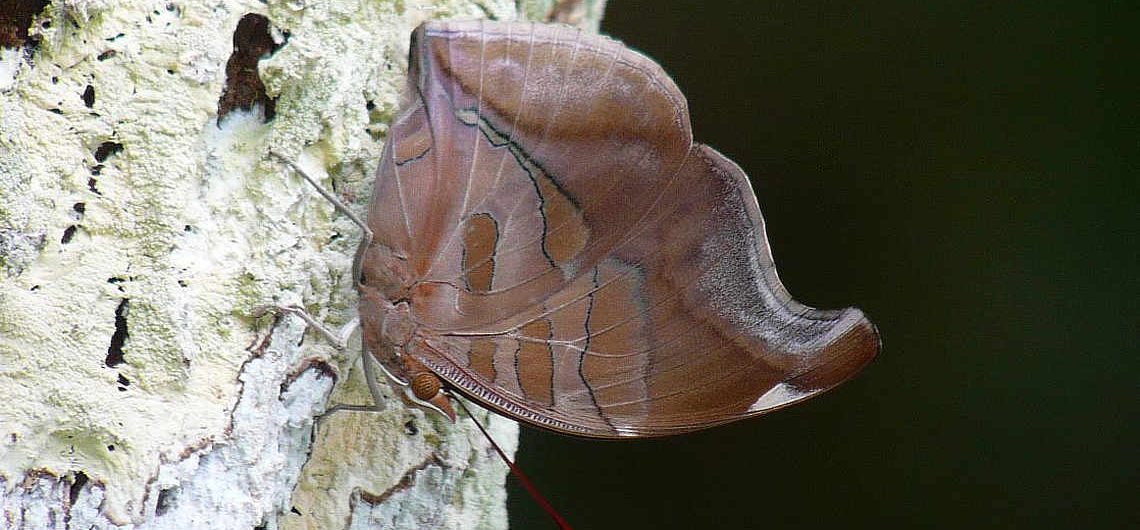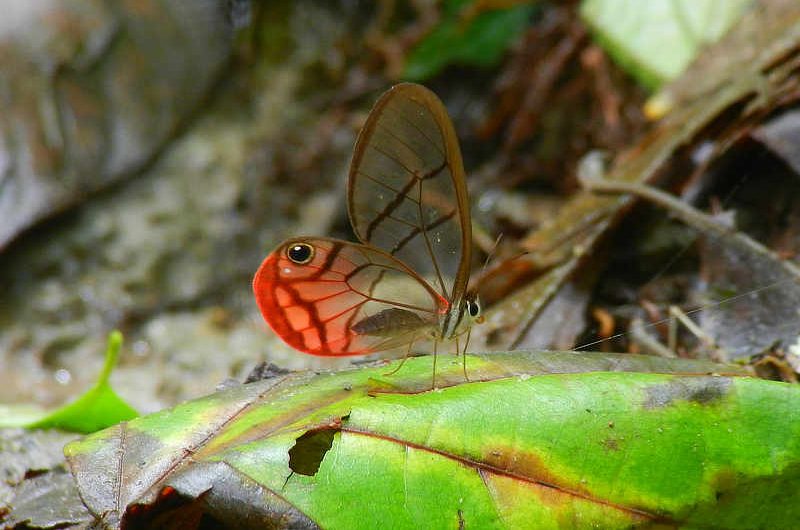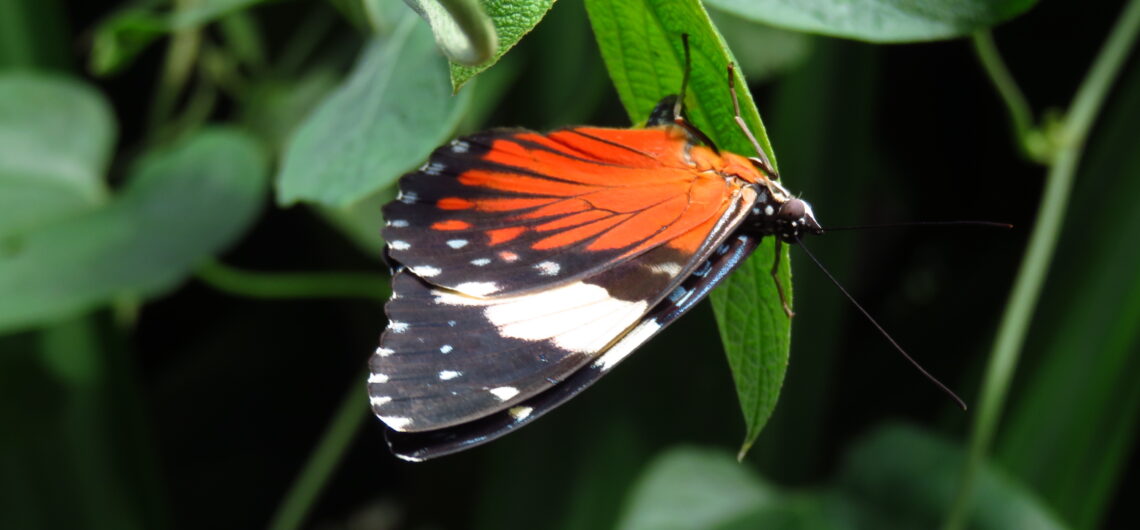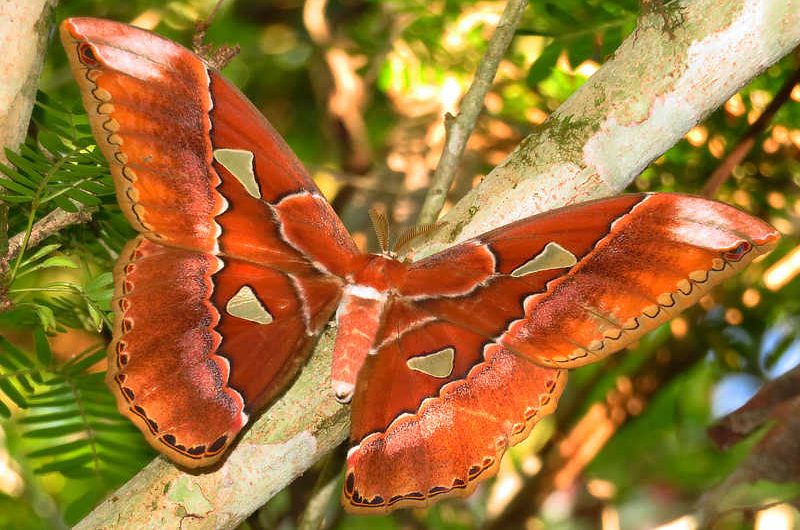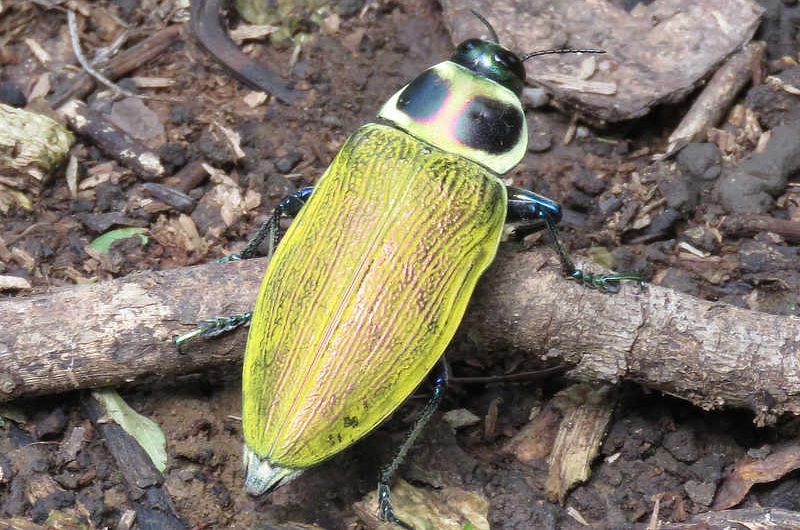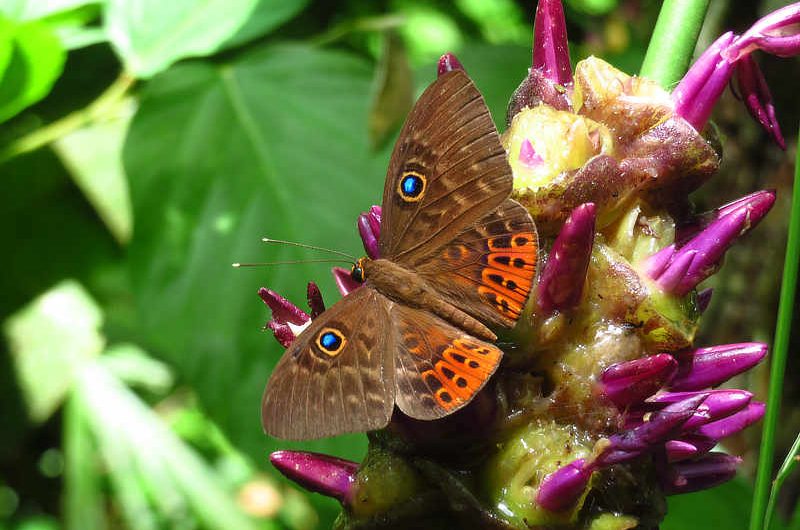Banded Peacock Anartia fatima Photo by Jonathan Slifkin The Banded Peacock is among Panama’s most abundant butterflies. It is brown above with a bold cream-white to yellow band across each wing as well
Orion Cecropian Historis odious Photo by Tino Sánchez This captivating, large butterfly has a wingspan of 11 cm (4 in.) and calls attention with its bright orange upperparts when flying. However, at rest,
Blue-winged Helicopter Damselfly Megaloprepus caerulatus Photo by Domiciano Alveo With a wingspan of up to 19 cm, the Blue-winged Helicopter is the largest member of the dragonfly and damselfly order, Odonata. It is
Rusted Clearwing-Satyr Cithaerias pireta Photo by Jenn Sinasac Also known as “Pink-tipped Satyr” and “Blushing Phantom”, this pretty, delicate butterfly is a member of the Nymphalidae family, the brushfoots. It is one of
Red Cracker Hamadryas amphinome Photo by Jenn Sinasac The Red Cracker is a truly flashy butterfly! Among some very interesting behaviors, the Red Cracker butterfly is strikingly beautiful – bright metallic blue and
Giant Butterfly-Moth Castniomera atymnius Photo by Jenn Sinasac The Giant Butterfly-Moth is one of the most intriguing of Panama’s insects. This diurnal moth creates much confusion when it comes to identification—it is easily
Rothschild’s Giant Silkmoth Rothschildia triloba Photo by Jenn Sinasac Rothschild’s Giant Silkmoths are among the largest and most beautiful of all moths. With a wide wingspan of 10-12 cm, they are approximately the
Giant Ceiba Borer Euchroma gigantea Photo by Jenn Sinasac This very distinctive beetle always captivates our guests—it’s one of the largest beetles around! In addition to its whopping size (5-8 cm), its robust,
Harlequin Beetle Acrocinus longimanus Photo by Jenn Sinasac One of the largest and most beautiful beetles of the Neotropics, the Harlequin Beetle is named for the ornate, colorful red, olive & black pattern
Great Eurybia Eurybia patrona persona Photo by Jenn Sinasac Also known as the Great Sheenmark, this is a large, recognizable member of the metalmark family, Riodinidae. At 30-35 mm, it is the largest

